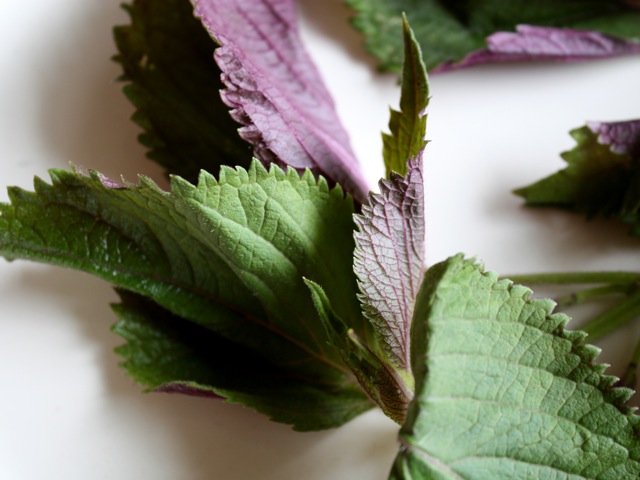
reference-image, l
(article, Sophia Markoulakis)
[%pageBreakSettings nobreak=true] Most of the foods that we in North America label as "exotic" or "ethnic" are neither in their countries of origin. Betel leaves, for example, might be unfamiliar to a native Iowan, but a dietary staple to a native Thai. [[block(sidebar). h1.Featured recipes]] Thanks to the small immigrant farms and ethnic markets that continue to pop up in communities across the United States, our selection of fresh Asian greens has expanded in recent years. This increased availability offers not just new flavors to the uninitiated but new cuisines and cultures. And the health benefits of these tasty tender greens, which are full of B vitamins, A and C vitamins, calcium, and important minerals and antioxidants, mean that Asian greens should be on everyone’s plates. Even if you’re not a fan of Asian fare, try incorporating any of the following greens into your current recipe repertoire. Most of these greens come from the same plant family as our beloved broccoli and cabbage and taste similar. None require long cooking; on the contrary, most Asian greens should be cooked quickly, sealing in their sweetness by stir-frying or steaming. Try swapping Asian greens for mustard, Swiss chard, or spinach when preparing a favorite recipe. Store Asian greens like you would any other green. Larger, more mature greens can remain in the refrigerator for up to five days, while smaller, tender greens should be used within three days of purchase. [[list(culinate8). #(clear n1). [%image reference-image float='clear right' width=350 caption="Shiso leaves, also known as perilla."]Shiso. Also known as perilla, this tender Japanese herb is available in both purple- and green-leaf varieties and has similar minty and earthy overtones. A frequent component in sushi and sashimi, shiso leaves also turn up in tempura dishes. For a Western approach, whip up a batch of shiso pesto, swapping the basil for this pungent, palate-cleansing leaf. Add a good squirt of lemon juice while blending and toss with seafood and pasta. #(clear n2). [%image mizuna float='clear right' width=350 caption="Mature mizuna leaves."]Mizuna. If you’ve ever eaten bagged salad mix, then you’ve probably already had mizuna. Usually eaten young, this feathery, lettuce-like brassica can also be eaten mature, when its peppery flavor is more pronounced. It’s more difficult to source at this stage, so consider growing some within your lettuce patch. Try mizuna instead of arugula, since their flavors are very similar. Use mizuna leaves as bedding for a grilled fish fillet or chicken breast. #(clear n3). [%image tatsoi float='clear right' width=350 caption="Tatsoi."]Tatsoi. Like mizuna, this brassica also turns up in many salad mixes and can be enjoyed both young and mature. When young, tatsoi's lovely rounded leaves make a nice flavorful punch to salads. When mature, the quilted-looking leaves resemble Swiss chard and taste like a mild mustard green. A relative of bok choy, tatsoi is great in soups such as ribollita or minestrone, when greens are the last ingredient added before serving. #(clear n4). [%image peashoots float='clear right' width=350 caption="Pea shoots."]Pea shoots. For pea shoots, the tendrils and young stalks of the snow-pea plant are harvested when they're just a few inches high, before any fruit has set. Like other vegetables grown specifically for their sprouts, pea shoots taste remarkably like their fruit, with concentrated snow-pea flavor. Western farmers grow them seasonally, but Asian markets often have them year-round. Pea sprouts are simply harvested at an earlier stage and are equally tasty in salads and stir fries. Both pea shoots and pea sprouts can be used in Shrimp, Fennel, Blood Orange, and Pea Shoot Salad. #(clear n5). [%image chrysanthemum float='clear right' width=350 caption="Chrysanthemum greens."]Chrysanthemum greens. Also known as tong hao in Chinese and shingiku in Japanese, the lovely edible leaves of the Garland chrysanthemum plant (Chrysanthemum coronarium) have a slight mustard and anise flavor. This popular Japanese green is a common ingredient in hot-pot dishes such as sukiyaki and nabemono. When added at the last moment, the crisp texture and bright flavor of chrysanthemum greens enhance these traditional winter one-dish shared meals. Most Japanese markets carry chrysanthemum greens. Give them a try in a Western version of nabemono (loosely translated as “one pot of stuff”) with a meat or vegetable broth, vegetables, meat, and noodles or rice. #(clear n6). [%image betel float='clear right' width=350 caption="Betel leaves."]Betel leaves. Many Asian cuisines use a leaf as a cooking vessel, though few are as delicious as betel leaves (pronounced like "beetle"). These heart-shaped, mild-tasting leaves impart a pronounced, smoky-sweet flavor to seasoned beef filling when grilled in the popular Vietnamese dish bo la lot. Not to be confused with the pepper leaf, which is often chewed, betel leaves (Piper sarmentosum) can be found fresh or frozen in many Southeast Asian markets. Try swapping grape leaves for betel leaves in a dolma recipe, skewering and grilling them instead of baking or steaming. Just make sure the rice in the dolma recipe is already cooked before grilling. #(clear n7). [%image choysum float='clear right' width=350 caption="Choy sum, one of the many choys."]Choy sum. It’s easy to mix up all the choys, since the word “choy” translates as “vegetable or cabbage.” Choy sum is a member of the brassica family, but it's more closely related to rape or rapini than to bok choy. It’s also referred to as Chinese mustard, since it develops small edible yellow flowers within its bright green leaves. Select smaller bundles with closed flower buds, ensuring a sweeter, less bitter flavor. Enjoy choy sum as you would rapini or broccoli rabe, quickly steaming and sautéing it with garlic and pine nuts. #(clear n8). [%image gailan float='clear right' width=350 caption="Gai lan, or Chinese broccoli."]Gai lan. Also referred to as Chinese broccoli, gai lan resembles choy sum but with white flowers instead of yellow and larger, rounded, smooth leaves. This brassica is enjoyed for its deliciously sweet stalks, but the entire plant can be eaten too. Not quite as peppery as choy sum, gai lan is great in stir fries, holding up well to other strong flavors. Serve sautéed gai lan alongside a classic roast chicken and potatoes, seasoning it with fresh yuzu or lemon, toasted breadcrumbs, and chopped capers. ]] p(bio). Sophia Markoulakis is a food writer and recipe developer based in the Bay Area.

reference-image, l

gailan, l
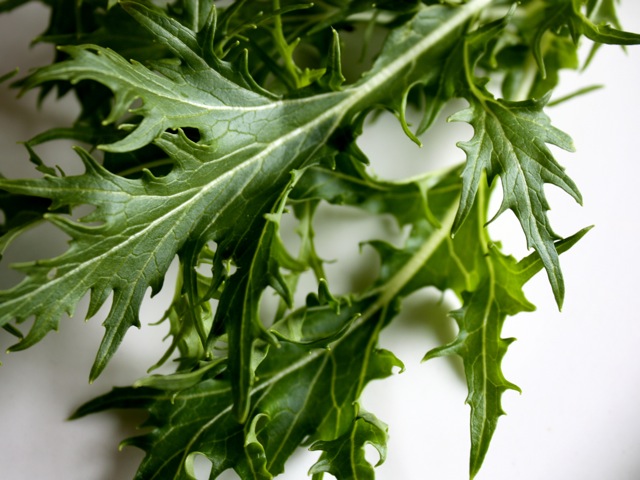
mizuna, l
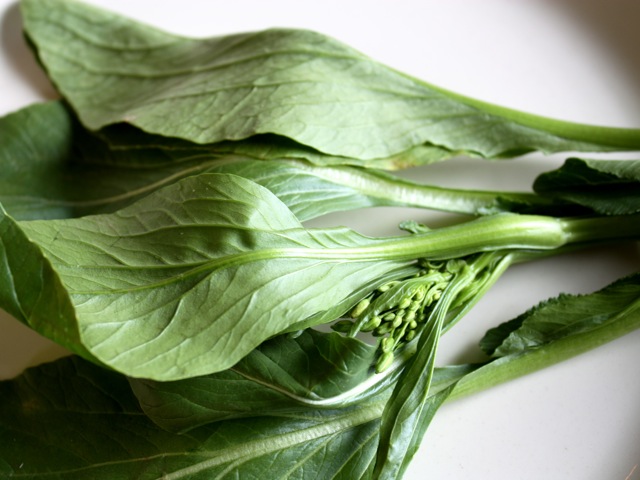
choysum, l
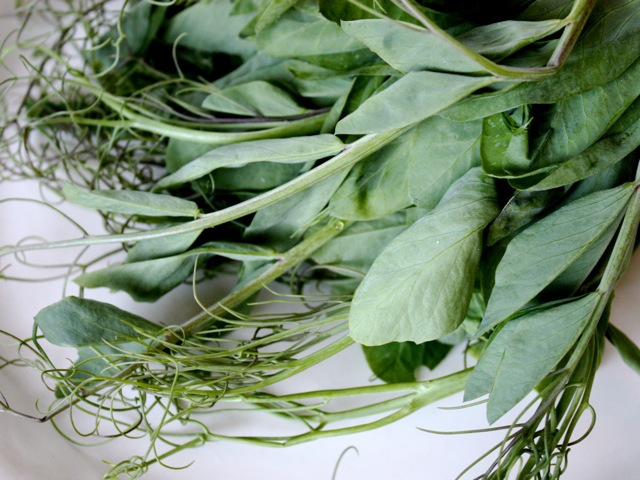
peashoots, l
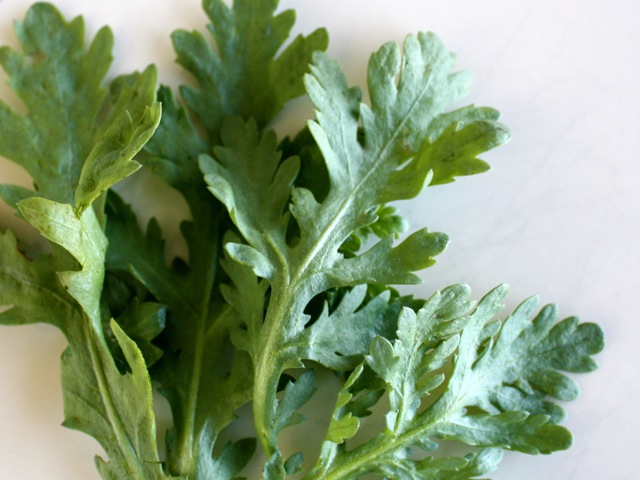
chrysanthemum, l
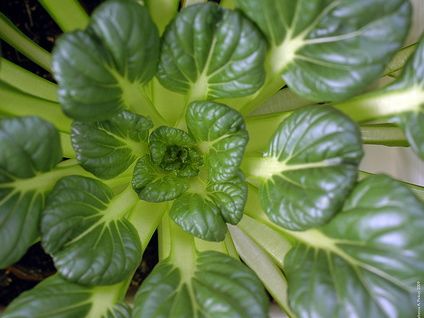
tatsoi, l
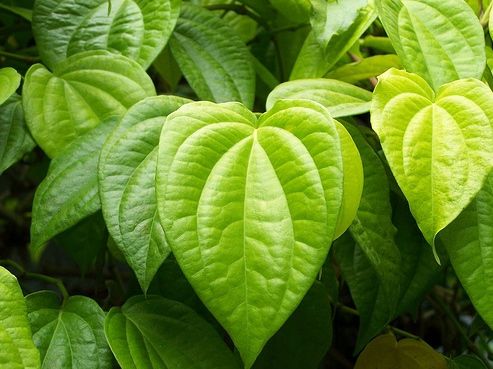
betel, l